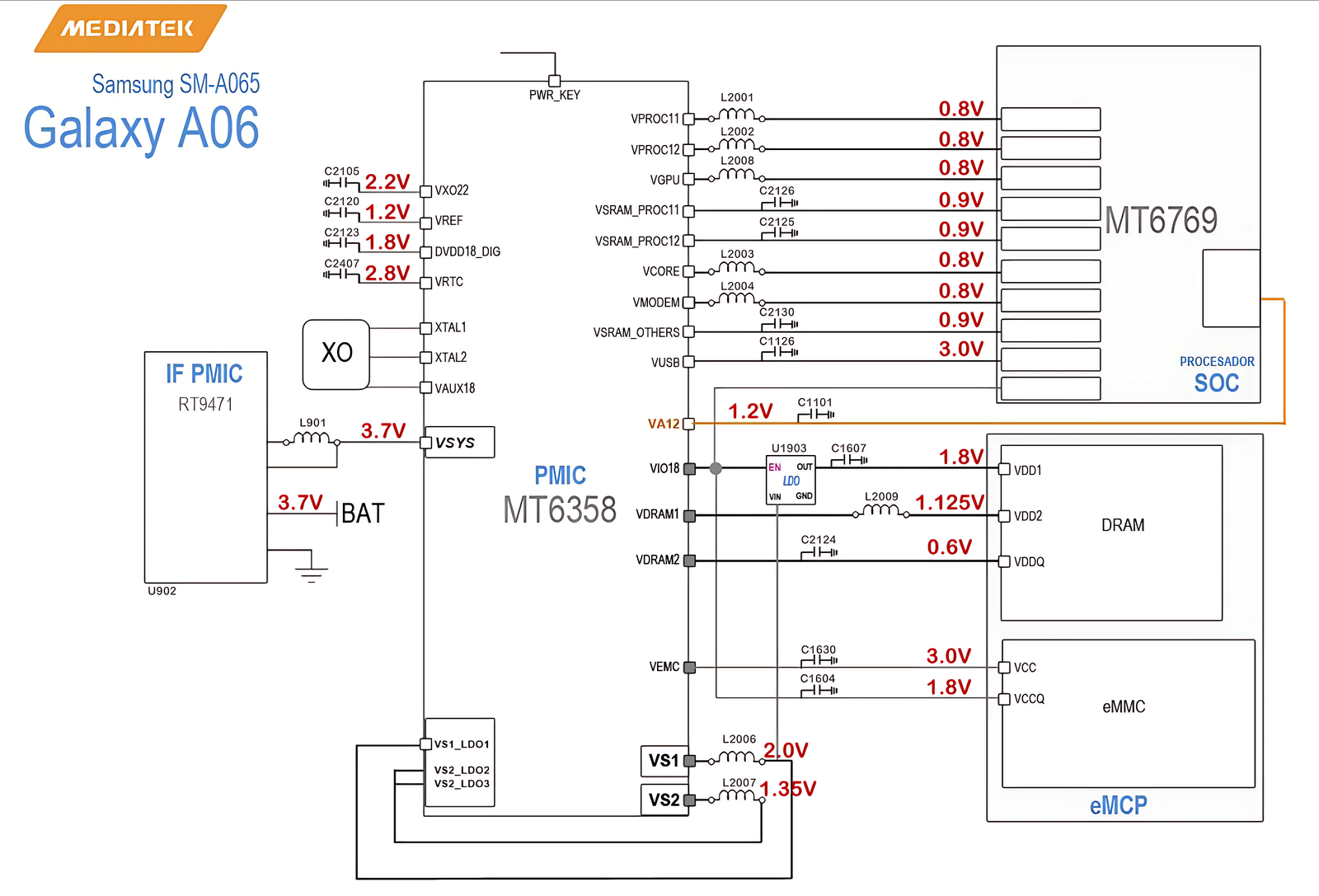🔋 Power Management System of Samsung Galaxy A06 (SM-A065)
In this post, we’ll explore the power distribution system of the Samsung Galaxy A06 smartphone using the MT6358 PMIC and MT6769 SoC. Understanding how voltage rails are distributed helps technicians, engineers, and developers troubleshoot, repair, and optimize smartphone hardware.
📷 Circuit Diagram Overview

⚙️ Main Components
- MT6358 - Power Management IC (PMIC)
- MT6769 - Main Processor / SoC (Helio G70)
- DRAM - Memory module
- eMMC - Embedded storage
- RT9471 - Charging IC
🔌 Power Input
The main power comes from the battery, denoted as VBAT = 3.7V. This voltage enters the system through the charging IC (RT9471) and is filtered via inductor L901 to provide VSYS = 3.7V to the MT6358 PMIC.
🔧 Voltage Rails Generated by PMIC (MT6358)
1. For the SoC (MT6769)
VPROCRails: 0.8V (core voltages for CPU & GPU)VGPU: 0.8V → GPU CoreVSRAM_PROC1/2: 0.9V → SRAM internal logicVMODEM: 0.8V → Baseband/ModemVCORE: 0.8V → Logic CoreVSOC/VIO18: 1.8V → IO & peripheralsVUSB: 3.0V → USB functionality
2. For DRAM
VDD1: 1.8VVDD2: 1.125VVDDQ: 0.6V
3. For eMMC Storage
VCC: 3.0VVCCQ: 1.8V
4. Other System Voltages
VX022: 2.2VVREF: 1.2VDVD18_DIG: 1.8VVRTC: 2.8V (Real Time Clock)VA12: 1.2V AnalogVS1: 2.0VVS2: 1.35V
🔁 How It All Works Together
Once the battery is connected and the system is powered on via the PWR_KEY, the MT6358 PMIC activates and begins distributing power to all essential blocks based on startup sequences defined in firmware.
The PMIC uses internal regulators (LDOs and buck converters) to step down the input voltage (3.7V) to precise levels required by each subsystem. These regulators are efficient and ensure minimal heat loss and maximum battery life.
📌 Highlights
- PMIC ensures all voltage levels are stable and sequenced correctly.
- SoC operates at multiple low voltages to balance performance and power efficiency.
- Separate power domains for memory and storage improve reliability.
- PMIC is the heart of power control in modern smartphones.
🧠 Conclusion
Power management is one of the most critical aspects of smartphone design. With components like the MT6358 PMIC and MT6769 SoC, devices like the Samsung Galaxy A06 achieve efficient and reliable operation across various hardware blocks. Whether you're a repair technician, reverse engineer, or enthusiast, understanding these power rails will help you diagnose issues, optimize performance, and appreciate the intricate design of mobile electronics.
